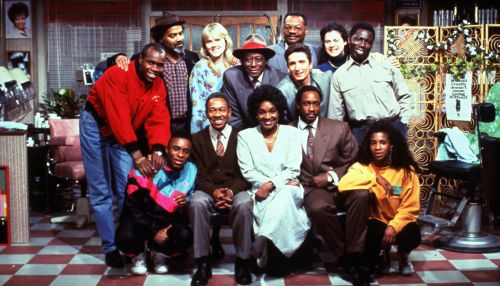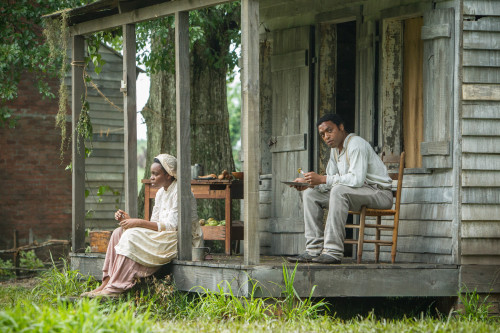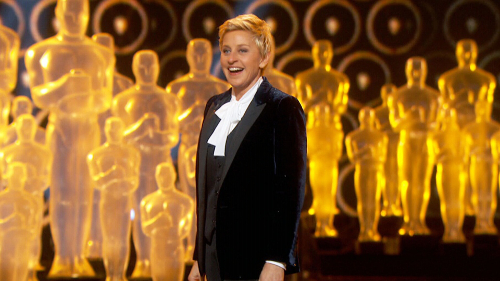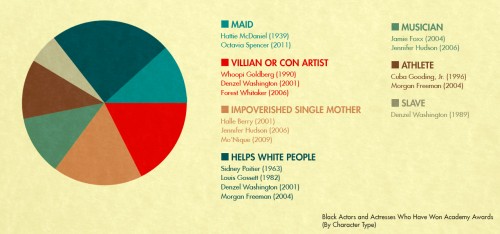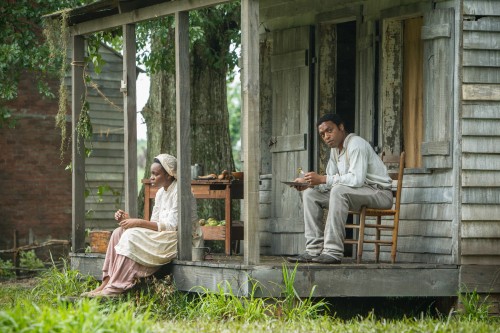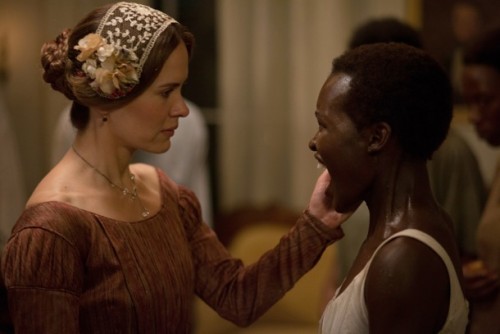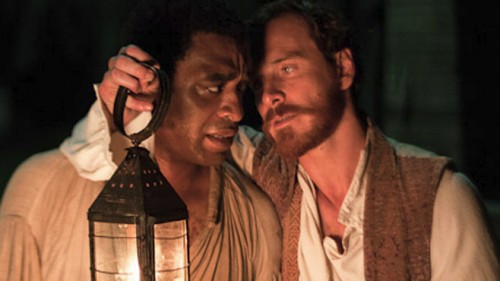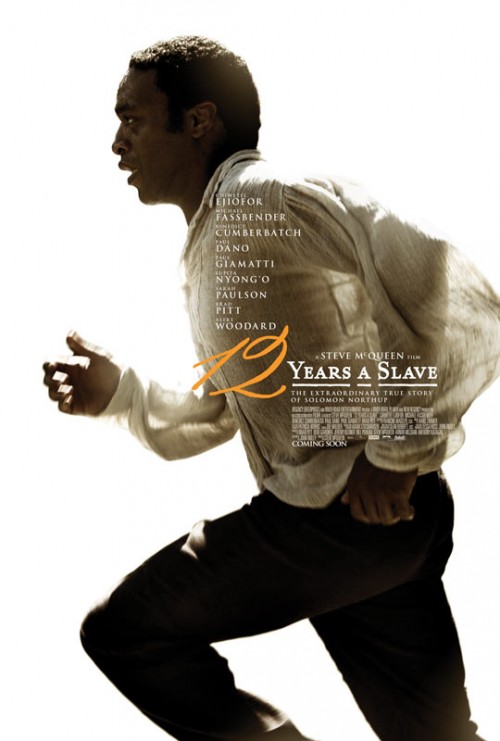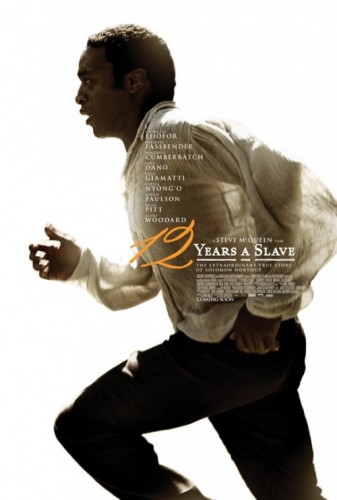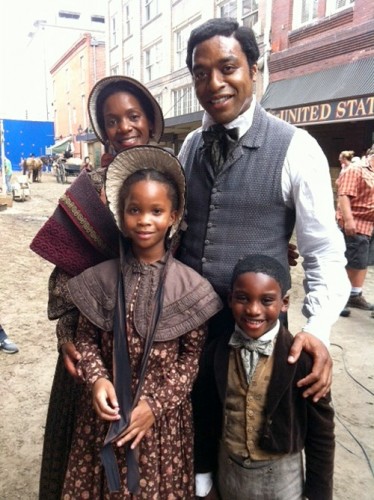When Solomon, Eliza, and her two children are both sold, she is sold away from her children. Their new slave owner, William Ford, (Benedict Cumberbatch), feeling guilty when he hears Eliza’s sobs of protests, tries to buy the children, but the auctioneer refuses to sell the them. William Ford takes Solomon and a devastated Eliza to his plantation, where she continues to cry on the journey to the plantation. When Ford’s wife, Mistress Ford, hears of new slave Eliza’s plight she callously responds, “Oh poor thing, well she’ll get over it in a day or two.”
This guest post by Atima Omara appears as part of our theme week on Black Families.
In 12 Years of Slave, the theme of family is a tie that binds throughout the story. While the film depicts the life of Solomon Northrup, a freeman captured and sold into slavery, and his struggle to get back to his life and his family. 12 Years also reflects the lives of other slaves he meets who too are separated from their families. 12 Years is very tightly focused on the systematic dehumanization of Black people in the American South during slavery. This film defines the subhuman view of the Black family in the antebellum South that remained pervasive post the Civil War and into the 20th Century where its effects have filtered into many films and TV shows.
12 Years A Slave is an autobiographical account told from the perspective of Solomon Northrup, after his capture into slavery. While sitting in his first prison, awaiting to be moved into the South, Solomon meets another slave, Eliza, who was essentially treated as a wife by her previous slave owner with whom she also has two children. After his death, Eliza and her two children are sold away and it is there, awaiting the auction block, she meets Solomon. When Solomon, Eliza, and her two children are both sold, she is sold away from her children. Their new slave owner, William Ford, (Benedict Cumberbatch), feeling guilty when he hears Eliza’s sobs of protests, tries to buy the children, but the auctioneer refuses to sell the them. William Ford takes Solomon and a devastated Eliza to his plantation, where she continues to cry on the journey to the plantation. When Ford’s wife, Mistress Ford, hears of new slave Eliza’s plight she callously responds, “Oh poor thing, well she’ll get over it in a day or two.”

Director Steve McQueen beautifully wove in the humanity of Northrup and the other slaves, which made their enslavement that much more heart-wrenching. When Eliza still sobs days later on the Ford plantation because she misses her children, Solomon tries to silence her. She chides him, “Have you stopped crying for YOUR children?!” He retorts, “They are as my flesh…..I survive…I will keep myself hardy until freedom is opportune.” And Solomon does, ingratiating himself to his Master, William Ford, for his work, he receives a violin in which he engraves the name of his wife and children. They are never far from his mind as he tries to desperately find ways to become a freeman again.
Eventually, because Eliza’s crying becomes to annoying to Mistress Ford, she is removed from the plantation. Mistress Ford’s dismissive comments and subsequent removal of Eliza from the plantation is reflective of the antebellum’s American South’s view of the Black person and the view of their family. There was the economic and biblical justifications for slavery, but eventually enslaving other human beings birthed an American ideology of race inferiority. Nineteenth century US Senator John C. Calhoun famously said, “Never before has the Black race of Central Africa, from the dawn of history to the present day, attained a condition so civilized and so improved, not only physically, but morally and intellectually.”
In the minds of white slave owners and their supporters, slavery was a favor to Black people, who could not have lives of their own or feel loss or pain. This ideology is understandable when you consider the horror of what they were justifying. To acknowledge the humanity of Black people would have forced one to acknowledge that slavery was wrong.
Through the evolution of American film and later television, we see the variations of this view that the white slavers have of their Black slaves filter into the lens of white directors, producers, and writers of films and TV shows featuring Black people and their families.
The film that has the distinction of being the first 12-reel full motion picture film in America is D. W. Griffith’s Birth of a Nation in 1915. Commercially successful, the film was controversial due to its portrayal of Black men as unintelligent, barely human and sexually aggressive. The first talking motion picture in 1929 was Al Jolson’s The Jazz Singer, where Jolson performed as a white actor in Black face, recalling the minstrelsy
With those promising precursors films, films in the 1930s hardly shifted. With Gone with the Wind or The Littlest Rebel, audiences never knew the stories of the Black slaves who were supporting characters to Vivien Leigh’s Scarlett O’Hara or Shirley Temple’s little Virginia Carey. Scarlett’s Mammy (played by Hattie McDaniel) we know nothing about, whether she had husband, children, or siblings. Nor do we know much of Virgie’s Uncle Bill (Bill Robinson). Because Mammy and Uncle Billy do not need a family, because their duty is to serve their white families.

From the 1930s to the 1950s, Hollywood’s “Golden Age,” these images of Black people and their families improve barely, especially when theaters refuse to show films with prominent Black leads. Look at the 1950s interpretation of Imitation of Life with actresses Lana Turner and Juanita Moore. At first glance, it is a story of two single women raising their daughters together. Lana Turner’s Lora is a struggling young actress with a daughter who befriends Sarah, the daughter of Juanita Moore’s Annie, who is a homeless Black widow. Because of the girls’ friendship, the women move in together. While you do see the humanity of Annie and the love she has for her daughter Sarah, you realize you don’t see much of Annie’s life outside of that. Annie becomes a maid to Lora and her daughter and is a momma to Sarah. Like Mammy or Uncle Bill, we know little of Annie’s friends, if she ever finds love again, in comparison we do see the love life of Lora’s, her friends, and her career become successful.
The height of the Civil Rights Movement in the 1960s and the conscience shift of the country raised awareness as to the plight and actual humanity of the Black American. With that it brought in some changes and new opportunities for Black characters in film. Actors like Sidney Poitier, Ruby Dee, Ossie Davis, Harry Belafonte, and others challenged the perception of the Black experience in film. In 1961, Black playwright Lorrain Hansberry’s play, A Raisin in the Sun, about a young Black man (Sidney Poitier) trying to find a better life for his family became a film. Behind the scenes it was a play that almost never happened, because it was a predominantly African American cast it took a long time to secure funding for its debut. And even with its final success on Broadway there was much argument between critics who were primarily white as to whether the experience was “universal” or particular to African Americans.

While the movie industry addressed race glacially, television as a newer medium moved at a faster pace in providing more opportunities for Black family portrayal. In 1968, CBS debuted Julia, with Black actress Diahann Carroll as its lead. It was the first show to depict a Black woman in the lead of a show that was a non-stereotypical role. Julia was a single mother and nurse whose husband had been killed in Vietnam. Today, it’s considered “groundbreaking.” Then, critics (again mostly white) derided it for not being “realistic.” Used to seeing nothing but Black poverty on the news, critics held Julia up to that as the standard for Black American life. The Saturday Review’s Robert Lewis Shayon wrote that Julia’s “plush, suburban setting” was “a far, far cry from the bitter realities of Negro life in the urban ghetto, the pit of America’s explosion potential.” Other critics implied the show was a “cartoon.” Unsurprisingly, Ebony Magazine, whose magazine’s readership and staff are Black Americans, appreciated its significance in showing a “slice of Black America.”
The 1970s brought more Black family focused television; of significance was Good Times and The Jeffersons, both where productions from white liberal showrunner Norman Lear. The portrayals of the Black family vastly improved, if by virtue of the fact that they were getting time on major network television, some shows still would never entirely escape the stereotypical trope in the 1970s.
Good Times featured actors Esther Rolle and John Amos in the lead roles. They played Florida and James Evans, heads of a working class Black family who live in housing project in Chicago. Notably, African American writers conceived the idea and the initial script of the show Norman Lear picked up. Actors Rolle and Amos signed up for the project, interested in a regular series with a Black working class family at the center. Not too long into the show, one of the children of the Evans family, JJ Evans, became a popular character for his phrase “Dy-NO-mite” and his funny antics. As the show progressed, it increasingly focused on him and crazy antics, which recalled the days of Black minstrelsy shows in the early 20th century, where usually white actors in blackface exaggerated real-life Black circumstances in a cartoonish way and reinforced stereotypes of Black people. The Evans family, particularly JJ, became subject to the long line of stereotypical portrayal of African American family life much to the chagrin of actors Esther Rolle and John Amos. Behind the scenes Esther Rolle left the series in frustration and John Amos was fired.

Lear’s The Jeffersons in comparison was an improvement upon Good Times, in that it showed a working class Black family, who made good and moved to the wealthy neighborhoods of New York. Even though the show took on political topics, it is notable for featuring more of the everyday life of this Black family with its colorful patriarch George Jefferson, played by Sherman Helmsley. The show enjoyed a successful 10-year run. In some ways, The Jeffersons was the grandfather of later Black family-centered shows like The Cosby Show and The Fresh Prince of Bel-Air, with Sherman Helmsley reprising his role as George Jefferson to appear on The Fresh Prince of Bel-Air.
As the 1980s dawned there were more Black family-centered shows like 227 and Amen, but one would be remiss in not mentioning the The Cosby Show in the 1980s, which came out of already established comedian Bill Cosby’s stand up act about his family. The Huxtables were an upper-middle class Black family who lived in Brooklyn. Cliff Huxtable (Bill Cosby) and Claire Huxtable (Phylicia Rashad) were the parents to their five children. The show was revolutionary for the Black family because it was distinct in featuring the everyday occurrences, drama, and humor of family life. The Cosby Show occasionally dealt with serious issues like dyslexia or teen pregnancy, but it was not a show that focused on racial politics; indeed, that may have been the point. Some criticized the lack of discussion around race or racial politics in the series, fearing that white audiences who embraced the show would consider “racism” a thing of the past. What is certain is that The Cosby Show was viewed as seminal in Black family portrayal on television. When it ended in the early 1990s, there was an influx of Black family-centered comedies that were greenlighted for major network television like In Living Color, The Fresh Prince of Bel-Air, Family Matters, Roc, Hanging with Mr. Cooper, Sister, Sister, and the list goes on. Notably many of these shows had African American creators or writers, which allowed for more Black family storytelling.
We have come a long way in the normalizing of the Black American family, but given the diversity of the Black American family experience, it is clear we still have a long way to go in Black family storytelling.
Atima Omara is a political strategist of 10 years who has served as staff on eight federal and local political campaigns and other progressive causes. Her writings focus on gender, race, and politics but also how gender and race are reflected in film and popular culture. In her sparetime, she reads, watches movies and documentaries, and attends film festivals when she can. You can find more of her writing at www.atima-omara.com. She tweets at @atima_omara.
